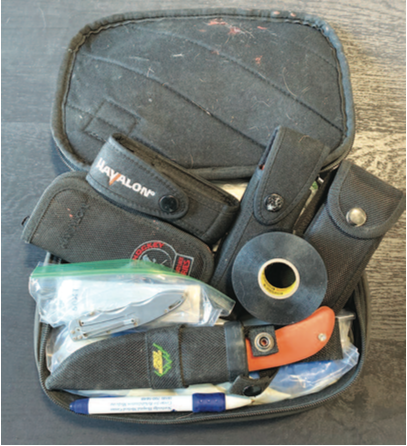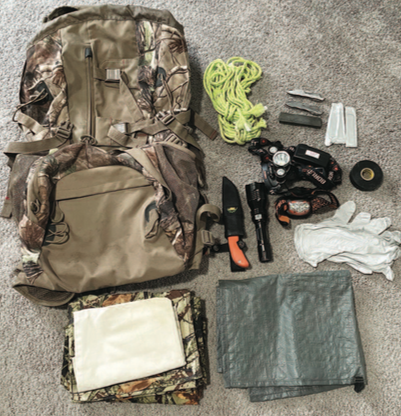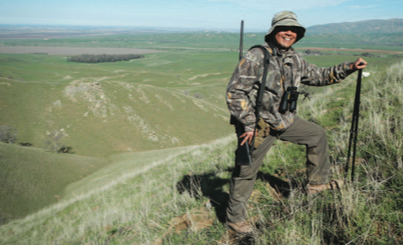
BY TIM HOVEY
While I try and hunt year-round and carve out some time to fish as well, this time of year is by far my favorite. Things start finally cooling off, the days are getting perceivably shorter and those of us that know what’s right around the corner can feel the change — it’s time to hunt.
While it’s very important to make sure your hunting rifles are cleaned and sighted in, my preparation goes far beyond a day at the range. Since I try and hunt everything from small game to big game, my first preparation focuses on getting myself in shape for the season.
It’s obvious to everyone I hunt with that it’s hard for me to stay in one spot. My dove hunting friends often ask me why I even bring a chair, since I spend most of the time hiking the fields with my eyes to the sky. I can rarely sit still and if there are wild places to explore, I don’t care what I’m hunting, the sit and wait thing is hard for me to do. I’ve always been like that and over a lifetime of experience, I can tell you it has served me well. So, when the season comes around, I make sure I’m in good enough shape to hunt the way I like.
Around the beginning of July I start trying to shed the few pounds I seem to always accumulate in the off-season. I start eating better, eating less and add in some short walks. Those short walks turn into longer walks around the
neighborhood as the summer progresses. All these physical outings are done in my hunting boots to make sure my feet are ready for the season as well.
Since the cottontail season opens up here in California on July 1, I’ll further test my conditioning with a few rabbit hunts. Hiking a few miles in the desert heat carrying a shotgun will tell me if I’m getting in shape.
Honestly, I try and make sure that I don’t get too out of shape during the off-season so that these annual workouts are never more than a little focused preparation. Believe it or not, staying in hunting shape is always on my mind.
Depending on what I have scheduled as far as big game hunting, I always try and get out to the area to scout. Scouting to me involves way more than just glassing from the truck. I’ll hike for miles in the areas I want to hunt looking for tracks, bedding areas and general presence of the game I’m hoping to chase. These outings are where I really plan my hunt.

I also religiously make two scouting trips to each area. I’ve always done it, and to me, it just gives me a bit more on-the-ground data to further focus my efforts. These second trips are where I identify glassing spots, alternative wind-related spots and hunting approaches. Understanding what deer, pig and elk do during the day — and more importantly, during different weather conditions — will give me a pretty good idea of where I need to be when the season opens.
As we get close to opening day, I start getting my gear ready for the hunt. I wouldn’t say I’m a gear guy — I usually use what works for me, but I like quality and it has to be durable. When it comes to the basics, I use high quality glass for my binoculars and my rifle optics. I don’t scrimp here. I like quality and good glass, and that comes at a price. I feel it is well worth it when it comes to picking out a few inches of antler in brush across a canyon or when it comes to clearly making that shot. In my teens, I purchased what I could afford and with optics, and I’ve learned you seriously get what you pay for. Spend extra to get a quality scope and spotting glass and you won’t be sorry.
Even though I don’t consider myself a gear guy, I do like a good hunting pack. I have several day packs, three larger hunting packs and two big game meat packs. All are comfortable to wear both light and heavy, and they have plenty of gear pockets for everything I’ll carry into the field.
With packs, my goal is to load up with only the bare necessities and keep things light. I always have the mindset that I will have a successful hunt and I will hopefully be hauling meat out. This means I want essentially an empty pack going in. This is where packs with multiple pockets are an advantage in my opinion. Thankfully, most of my mandatory items are small.
My pack will contain several knives needed for field dressing a large animal, as well as replaceable blades or a smaller blade sharpener. I always take at least two head lamps. I’ve lost count of how many times I’ve made it back to the trailhead when it’s dark. I’d rather travel during the light of day but being prepared with a headlamp gives me extra time to process and travel.

Meat bags, rope, electrical tape (to attach the tag to the animal), a small first aid kit, latex gloves, a camera and snacks for the day are also loaded in the pack before I head out. One of the simplest and most valuable items I add to the pack is a square piece of tarp. It’s light, folds up to next to nothing and will be invaluable in keeping meat quarters off the dirty ground and clean.
Add in the essentials like ammo, binoculars and water and that is really all I need to spend a day in the back country. I like smaller chest packs that mount in front to carry binos, licenses, tags and anything small that I can carry without adding more weight to the pack. The small personal safety location devices are also a great idea if you’re headed some place new or hunting solo. They add little in weight and give you and your loved ones piece of mind when you’re in the back country. My working gear, like my shooting sticks and rifle, I usually carry in case I run into something sooner than later.
I’m all about being prepared, so any item I carry in is a necessity. Unneeded weight will be an issue when you’re packing meat out. It’s best to plan ahead and take only what you absolutely need. I like to think of a scenario on the absolute edge of what might be encountered and plan for that. Keep this in mind and this season’s big game season will be memorable for all the right reasons.



